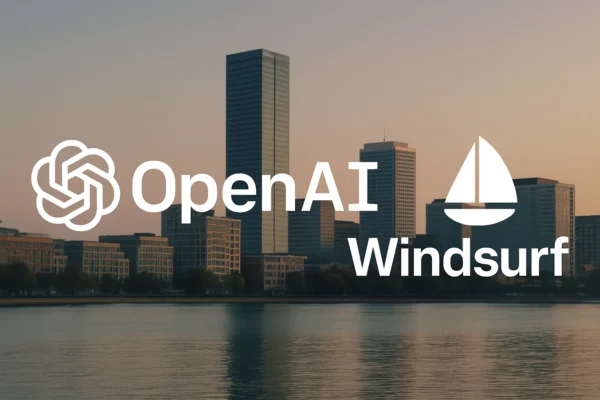
Explore how 5G, AI and Starlink are converging to power real-time innovations worldwide, with fresh data on India’s rapid 5G rollout.
As of April 2025, the global rollout of 5G technology has reached significant milestones, with varying degrees of adoption across different regions. This advancement is not only enhancing mobile connectivity but also serving as a catalyst for the evolution of artificial intelligence (AI), enabling real-time data processing and the proliferation of intelligent applications across various sectors.
Global 5G Deployment Status
The adoption of 5G technology varies worldwide. North America leads with an estimated 63% of mobile connections utilizing 5G, followed by Greater China at 52%, Europe at 44%, and the Asia Pacific region at 42%. Other regions such as Latin America, the Middle East, and Sub-Saharan Africa are gradually increasing their 5G adoption rates. Despite these advancements, some countries, including the UK, face challenges in achieving comprehensive 5G coverage, which could impede their AI development ambitions.
India’s 5G Expansion
India has emerged as a significant player in the global 5G landscape. As of March 31, 2025, the country has deployed over 412,000 5G Base Transceiver Stations (BTSs) across various states and union territories. This rapid expansion underscores India’s commitment to enhancing its digital infrastructure and bridging the connectivity gap between urban and rural areas.
The Telecom Regulatory Authority of India (TRAI) projects that by March 2025, approximately 300 million users, accounting for about a quarter of all wireless data subscribers, will be utilizing 5G services. This surge in adoption is further fueled by a 30% monthly increase in data consumption per user, highlighting the growing demand for high-speed, reliable connectivity.
Enhancing AI Capabilities Through 5G
The integration of 5G technology significantly enhances AI capabilities by providing high-speed, low-latency, and reliable connectivity. This synergy facilitates real-time data processing, which is crucial for AI applications in various domains:
Healthcare: 5G enables real-time remote diagnostics and telemedicine services, allowing AI-driven tools to analyze patient data swiftly and accurately.
Manufacturing: In smart factories, 5G supports AI systems in predictive maintenance and quality control, leading to increased efficiency and reduced downtime.
Transportation: Autonomous vehicles rely on 5G for instantaneous data exchange, enabling AI to make real-time decisions for navigation and safety.
Agriculture: AI-powered drones and sensors utilize 5G connectivity for real-time monitoring of crop health and soil conditions, optimizing agricultural practices.
AI-Driven Optimization of 5G Networks
AI plays a pivotal role in optimizing 5G network operations. Machine learning algorithms analyze vast amounts of data to manage network traffic efficiently, predict congestion, and adjust network parameters dynamically. This ensures seamless connectivity and high-speed data transmission, even during peak usage times.
Moreover, AI enhances network security by monitoring traffic for anomalies, detecting potential threats, and responding to security breaches in real-time. This proactive approach is essential in safeguarding the vast number of connected devices in a 5G ecosystem.
Starlink’s Role in Strengthening Global 5G-AI Infrastructure
While terrestrial 5G networks continue to expand, satellite-based connectivity is emerging as a vital complement — and SpaceX’s Starlink is leading the charge. By offering high-speed, low-latency internet in remote and underserved regions, Starlink helps bridge the digital divide, a critical factor for the global scalability of AI.
Moreover, Starlink’s integration with terrestrial 5G networks enhances network resilience and redundancy. This hybrid architecture ensures that AI systems — especially those deployed in autonomous vehicles, smart agriculture, or disaster response — remain connected even in areas lacking robust 5G infrastructure.
In 2024, Starlink began direct-to-device satellite services in collaboration with telecom providers, paving the way for smartphones and IoT devices to maintain connectivity without relying solely on ground-based towers. Combined with edge computing, this satellite-5G fusion unlocks real-time data processing and decision-making — essential capabilities for AI-driven solutions.
Collaborative Efforts and Future Prospects
Recognizing the intertwined future of 5G and AI, major technology companies have formed alliances to advance this integration. For instance, the AI-RAN Alliance, comprising industry leaders like Microsoft, Amazon, Nvidia, and Arm, aims to improve cellular technology for AI applications. Their objectives include boosting network efficiency, reducing power consumption, and upgrading infrastructure to support 5G and future 6G technologies.
Looking ahead, the development of 6G technology is anticipated to further revolutionize AI applications. Experts predict that 6G, expected to be operational around 2030, will be inherently AI-driven, facilitating the transmission of knowledge rather than just data. This advancement will enhance the efficiency and implementation of AI across various industries, including manufacturing, automotive, and logistics.
The global expansion of 5G technology is not only transforming mobile connectivity but also serving as a foundational platform for the advancement of artificial intelligence. The synergy between 5G, satellite connectivity like Starlink, and AI is unlocking new possibilities across multiple sectors, driving innovation, and shaping the future of technology. As we progress towards more integrated and intelligent systems, continued investment and collaboration will be essential in realizing the full potential of this technological convergence.






